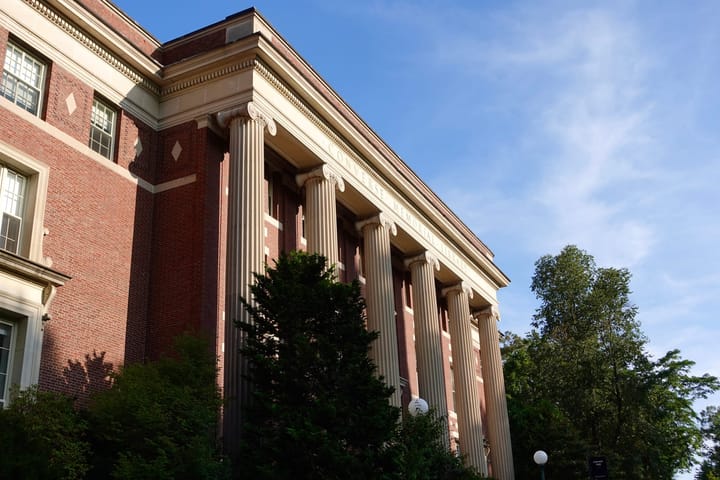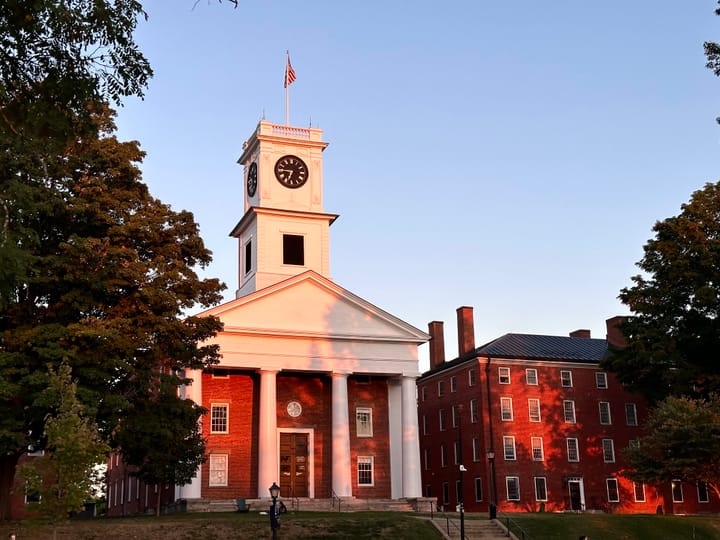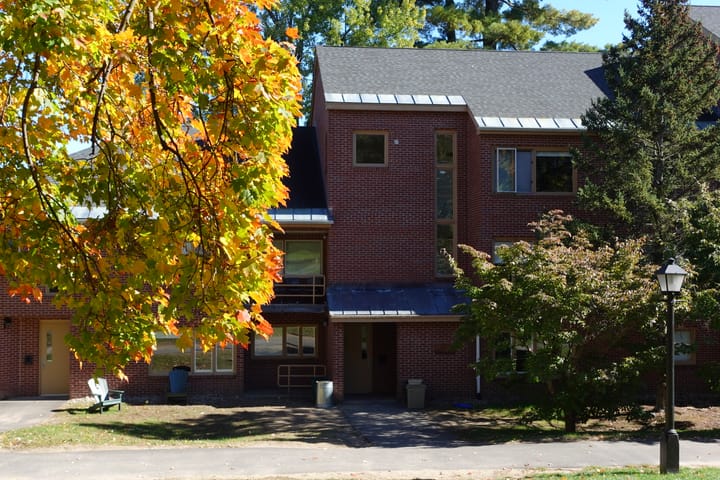Civic Engagement: Keep Elections Competitive
Managing Sports Editor Joey Supik ’27 explores why participation in Association of Amherst Students (AAS) elections decreases as grade year increases, and how the student body can keep them competitive.
The election results are in for the class of 2029’s senators for the Association of Amherst Students (AAS). This year, 18 candidates bravely put themselves out there for the eight senator seats, over twice as many candidates as seats. Many candidates created Instagram accounts promoting themselves through posts and reels, trying to convince their classmates to vote for their causes and ideas, and almost all candidates ran around campus and the First-Year Quad, frantically putting up eye-catching posters in any open space. Some took the campaigns more seriously than others, and some used their time to make others laugh with their silly goals if elected. Regardless, the first-year Senate elections tend to, unfortunately, be the peak of a class year’s widespread involvement in the student government.
Looking back, I realize my first year at Amherst had many defining moments, but one of the earliest core moments was when everyone and their mother ran for Senate. An incredible 26 people ran for just eight seats — with 337 total students voting in the class of 2027 Senate race, the election engaged nearly the entire class year. In the same election, the class of 2025 had three seats open with just three candidates running. The total number of voters was 57, with the last candidate winning the seat with a mere seven votes. All it took was seven votes to elect a person to one of the most important and influential positions a student can hold at Amherst. The glaring difference in care for the student government here was bewildering to me, and it wouldn’t be the last time, either.
Take last spring’s results for the class of 2028: 11 total candidates and 229 total voters. Fairly good turnout, right? Now look at the total voter count for the classes of 2027 and 2026 combined. In contrast to the freshman year elections, the now-junior and senior classes had merely 118 total voters. The now-sophomore class nearly doubled the voting engagement of the juniors and seniors combined. If you look at the candidates, the poor turnout makes sense. The class of 2027 had a perfect eight candidates, ensuring everyone would earn a seat, barring the chance that a write-in candidate would win. The class of 2026 didn’t even have eight candidates run, with the final seat won by a student who received four write-in votes. For a write-in candidate to qualify and, thus, win, they must receive at least 5% of the total vote. The four votes the candidate garnered made up 7.84% of the total votes. For reference, four votes in the class of 2028 election would amount to 1.74% of the total votes, missing the 5% mark by quite a margin.
These examples highlight the lack of engagement in the general Senate elections, but it also happens in the E-board polls. When the last E-board was elected, each position had two competing candidates except judiciary chair — the total number of voters for president — 580. 560 people voted for vice president, 530 for treasurer, and 511 for secretary. Compare the turnout here with the election for the current E-board. Only two positions held competitive elections: vice president and treasurer. With only one candidate for president, only 350 voted for the position. 331 voted for a vice president, 283 voted for a treasurer, and 276 voted for a secretary. Especially in a position as highly regarded as president, the more people who compete and campaign, the more people will engage with the elections. It doesn’t necessarily take 26 people running for eight seats to engage students, but it certainly does require the elected positions to have competition to force the student body to exercise its right to vote.
Let’s circle back to the first-year election: 298 students voted in their eight senators this past Friday and Saturday. The senior class also voted in their final senator, casting 29 votes for the candidate, and just 40 votes total. The difference in engagement between the first-years and seniors is crystal clear. For reference, if you took the senator’s 29 votes and doubled them, you’d still have fewer votes than the lowest-voted first-year candidate this year. The class of 2026 is one of the hardest-working years in the Senate, whether through their roles on the E-board or as senators. I’m puzzled, though, that this passionate group of students cannot capture the broad attention of the student body.
Seeing these patterns time after time, I was most concerned about why this difference existed in the first place. Was it general interest in student government depreciating with every passing year once the first-year novelty wore off? It could be that upperclassmen don’t get involved because the same people continue as senators throughout the three or four years, or they think it’s too late to get involved. Some see it only as an extracurricular to pad a resume and don’t engage with it any further than that, whether they are elected or not. Considering we are a busy student body, it’s possible people don’t engage with AAS because they simply don’t have the time. Some students likely rely on their elected peers to handle the Senate business, as is their duty, and communicate the most essential information to them.
It is also possible that certain groups of students don’t have someone they know in AAS, and, without an avenue into what happens, feel isolated from whatever the Senate discusses. While they could propose that one student from the group runs for the position, there is no guarantee that the person will be elected. Students could also have misconceptions about AAS and what exactly a senator is and does. It falls on AAS to communicate with the community as a whole, whether as the governing body or as individual members, but the outreach is irrelevant if the people won’t be engaged, regardless.
The ideal reason would be that current senators are doing a fantastic job, and the Senate requires no adjustments. Realistically, however, there are always at least a few senators who could be doing better. While you could attribute many of these factors to the election failures, my working theory is that the competitiveness — or lack thereof — in elections breeds interest in the student body and encourages the elected students to utilize their position properly. No student would care to voice their opinion via vote without competitive elections, especially in single-candidate elections.
Without bringing the student body into the Association of Amherst Students, the entire purpose of the Senate and its E-board is nonexistent. If we do not continue to exercise our voices through our elected peers, there may come a time when we view AAS as an inefficient and ineffective association, and perhaps suggest that it should be removed altogether. At that point, as student input in decision-making becomes null and void, we may realize the error in our ways. We must all play a part in re-engaging civically with one another to prevent such a situation from ever coming to fruition, whether it comes from the student body demanding more consideration from senators, the senators engaging with lesser-represented student groups, or just having authentic competitive elections that show whose voice truly represents the people.





Comments ()